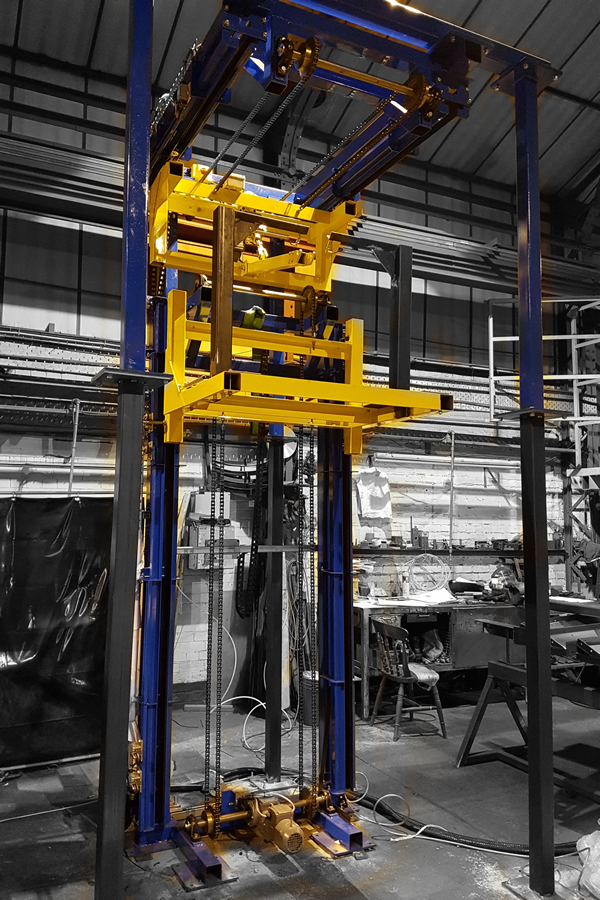We Maintain Lifts with Accuracy: Ensuring Safety And Security and Performance
Wiki Article
Digging Into the World of Elevators: Common Concerns Faced by Various Lift Devices
As we navigate via the upright transport systems of modern buildings, lifts stand out as a vital component of our day-to-days live. Nevertheless, behind their seamless procedure lies a globe of detailed systems that can sometimes experience obstacles. From hydraulic elevators to grip systems and machine-room-less layouts, each lift type comes with its collection of typical concerns. Understanding these difficulties is crucial for making sure the smooth performance of these important systems. Allow's explore the intricacies that underlie the procedure of elevators and the prospective concerns that can develop, shedding light on the elaborate internet of lift mechanisms.Hydraulic Lifts
Hydraulic lifts, usually chosen for low-rise buildings, use fluid stress to manage the activity of the lift vehicle (lift repair companies). This system entails a hydraulic pump pressing oil right into a cyndrical tube, causing the elevator to relocate the wanted direction. While hydraulic elevators are understood for their silent and smooth procedure, they do feature their very own collection of common issuesOne widespread trouble with hydraulic lifts is oil leakage. Additionally, issues with the control system, such as faulty shutoffs or a malfunctioning pump, can create interruptions in the elevator's movement.
Regular upkeep and timely repair work are important to ensure the smooth performance of hydraulic lifts. By dealing with these common concerns proactively, structure owners can minimize downtime and make certain the security and efficiency of their vertical transportation system.
Grip Elevators
When considering upright transportation systems in structures, one more common type apart from hydraulic elevators is the grip elevator. Grip elevators run utilizing a system of ropes and counterweights that move the lift auto by grasping onto the hoist ropes. This device enables for smoother and faster upright transportation contrasted to hydraulic systems.One of the usual problems encountered by traction lifts is rope wear. The constant activity of the ropes within the traction system can bring about use and tear gradually, possibly causing the lift to malfunction or end up being unsafe for usage. Regular assessments and maintenance of the ropes are vital to ensure the elevator's correct functioning and security.
Another concern that traction elevators might encounter is associated with the control system. Troubles with the control system can lead to problems such as irregular motion, hold-ups in feedback times, or even total closures. Normal testing and maintenance of the control system are critical to avoid such problems and make certain the elevator's reliability.
Machine-Room-Less (MRL) Elevators

Among the essential elements of MRL lifts is the small gearless traction equipment that is set up within the hoistway. This device successfully drives the lift vehicle without the need for cumbersome tools discovered in traditional traction lifts. Additionally, MRL lifts normally use a weight system to balance the car, additional boosting their energy performance.
Despite their benefits, MRL lifts might encounter challenges associated with upkeep and repair due to the restricted room for tools installation. Availability for servicing parts within the shaft can be restricted, calling for specialized training for specialists. Appropriate upkeep routines and normal examinations are important to guarantee the ongoing smooth procedure of MRL lifts.
Overloading and Weight Restriction Issues
Are lifts equipped to handle excess weight loads efficiently and safely? Overwhelming and weight limitation problems are important problems in lift procedures. Lift makers style raises with details weight abilities to make certain guest safety and security and devices durability. Exceeding these weight limits can lead to various problems, consisting of mechanical failings, hold-ups, and security risks.When elevators are overwhelmed, it places extreme strain on the electric motor, wires, and other elements, possibly triggering failures or malfunctions. Safety devices such as sensing units and overload sensing units are in area to avoid elevators from relocating if they discover excess weight. In addition, surpassing weight restrictions can cause increased power intake and damage on the elevator system.
To alleviate overloading concerns, constructing managers need to prominently show weight limitations in elevators and educate passengers on the importance of sticking to these constraints - lift repair companies. Regular upkeep checks by certified service technicians can also aid ensure that elevators are running within safe weight specifications. By dealing with overloading and weight limit problems proactively, structure owners can improve lift safety and effectiveness
Electric System Failings
Going beyond weight restrictions in lifts can not only lead to mechanical issues however likewise possibly add to electric system failings within the lift infrastructure. Electric system failings are an essential worry in elevator operation, as they can trigger unforeseen shutdowns, malfunctions, or also security risks.Routine maintenance and assessments are critical to determine and attend to potential electric issues immediately, ensuring the risk-free and reliable operation of lift systems. By adhering to weight limitations and conducting regular electrical system checks, structure proprietors can alleviate the threat of electric failings in lifts.
Verdict

Hydraulic elevators, often liked for low-rise buildings, use fluid stress to manage the activity of the elevator auto.When thinking about vertical transport systems in structures, one more we maintain lifts typical kind apart from hydraulic elevators is the grip elevator. Grip lifts operate using a system of ropes and counterweights that move the lift auto by grasping onto the hoist ropes. Unlike traditional lifts that need a different machine space to house the tools, MRL elevators integrate many of the parts within the shaft, eliminating the requirement for a committed machine room.In final thought, elevators encounter usual issues such as hydraulic malfunctions, grip system failings, and electric system problems.
Report this wiki page